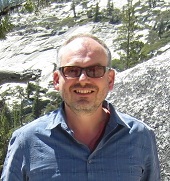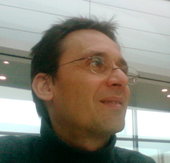Program
The workshop will take place on July 6th simultaneously as the other JOWO workshops taking place at FOIS. The program is shared between the workshops to improve the collaboration and discussions during coffee break. This also means that three of the keynote speakers will be shared across the workshops. CAOS has an additional keynote speaker that will only be part of the CAOS workshop. The final slot will be a JOWO-joint panel discussion with all the keynote speakers together with the audience.
Here is the detailed program: PROGRAM
CAOS has four accepted papers:
Dagmar Gromann, Maria M. Hedblom: "Breaking Down Finance - A method for concept simplification by identifying movement structures from the image schema PATH-following"
Fahim Imam and Thomas Dean: "Affordances in Representing the Behaviour of Event-Based Systems"
Miroslav Vacura and Vojtěch Svátek: "Towards Deontic Cognitive Event Ontology"
Marco Schorlemmer, Roberto Confalonieri and Enric Plaza: "The Yoneda Path to the Buddhist Monk Blend"
CAOS invited speakers
We regret to inform that our previously announced invited speaker Prof. Jean M. Mandler will not be able to attend the workshop due to unforeseen family circumstances.Dr. Brandon Bennett

Abstract: My talk will explore ways that formal ontology can be reunited with empirical investigations of language usage. I will suggest that establishing a relationship between natural language terminology and a formalised representation requires several aspects of semantic variability to be taken into account. This requires both extension of the formal apparatus associated with an ontology and also empirical, statistical information about the usage of linguistic terms. I outline my own approach which using my "Statistical Standpoint Semantics" to incorporate variability into a formal language and "Corpus Guided Sense Cluster Analysis" to establish a mapping between linguistic terms and formal symbols.
Dr. Olivier L. Georgeon
 Dr. Georgeon is a pedagogical engineer at the Innovation and Conception for Pedagogy (ICAP) Service at Université Claude Bernard Lyon 1 (UCBL). One of his tasks is to transfer lectures and courses into Massive Open Online Courses (MOOCs). Simultaneously he is a researcher on Developmental Artificial Intelligence with the LIRIS Lab / CNRS / UCBL. At CAOS he will present a talk on with the title: "From events to objects: investigating Alfred N. Whitehead's process of abstraction in artificial intelligence."
Dr. Georgeon is a pedagogical engineer at the Innovation and Conception for Pedagogy (ICAP) Service at Université Claude Bernard Lyon 1 (UCBL). One of his tasks is to transfer lectures and courses into Massive Open Online Courses (MOOCs). Simultaneously he is a researcher on Developmental Artificial Intelligence with the LIRIS Lab / CNRS / UCBL. At CAOS he will present a talk on with the title: "From events to objects: investigating Alfred N. Whitehead's process of abstraction in artificial intelligence."
Abstract:
In 1920, the mathematician and philosopher Alfred North Whitehead argued: "If we are to look for substance anywhere, I should find it in events which are in some sense the ultimate substance of nature" (Whitehead 1920, The concept of nature, p19). Whitehead called process of abstraction the process by which cognitive beings infer the existence of objects from regularities of events. The Whiteheadian process of abstraction precedes the distinction between the subject and the object. It is not intellectual but instinctive and immediate: objects are abstracted but do not require judgment nor intellectual synthesis. We design algorithms for artificial agents to perform Whiteheadian abstraction. In addressing this issue, we investigate the components (sensorimotor schemes, hierarchical sequence learning, spatial memory, ontologies) that need to be implemented to realize this process. This lead us to create agents capable of rudimentary self-programming (an important feature for achieving constitutive autonomy) through "sedimentation of habitudes". I will present demos that show that these agents exhibit some level of intelligence and self-motivation in their behaviors.
Dr. Gem Stapleton
 Dr. Gem Stapleton is a Reader in Computer Science at the University of Brighton with expertise in diagrammatic logics and information visualization where she is Director of the Visual Modelling Group. She is also a Visiting Professor at Jadavpur University in India and a Visiting Scholar at Doshisha University in Japan. Dr. Stapleton's major contributions to diagrammatic logics research include developing sound and complete sets of inference rules for Euler diagrams, spider diagrams, and constraint diagrams. In the information visualization area, Stapleton's contributions have made major advances on the problem of how to automatically visualize sets. The majority of this research has been on the development of algorithms for automated Euler diagram drawing. Gem devised the first algorithm that inductively draws Euler diagrams. At the workshop she will present a talk with the title: "Diagrammatic Ontology Engineering."
Dr. Gem Stapleton is a Reader in Computer Science at the University of Brighton with expertise in diagrammatic logics and information visualization where she is Director of the Visual Modelling Group. She is also a Visiting Professor at Jadavpur University in India and a Visiting Scholar at Doshisha University in Japan. Dr. Stapleton's major contributions to diagrammatic logics research include developing sound and complete sets of inference rules for Euler diagrams, spider diagrams, and constraint diagrams. In the information visualization area, Stapleton's contributions have made major advances on the problem of how to automatically visualize sets. The majority of this research has been on the development of algorithms for automated Euler diagram drawing. Gem devised the first algorithm that inductively draws Euler diagrams. At the workshop she will present a talk with the title: "Diagrammatic Ontology Engineering."
Abstract:
Ontology engineering is a difficult activity and requires both domain knowledge and expertise in modelling notations such as OWL. The symbolic-like nature of OWL and, even more so, description logics can pose a barrier to entry for those who are not mathematically trained. By contrast, diagrams are often seen as user-friendly notations that can be accessible to broad user bases. Indeed, recent research has shown that diagrams support cognitive offloading as compared to symbolic and sentential notations. The accessibility of diagrams motivated the development of concept diagrams which were specifically designed for ontology engineering. In this talk I will introduce concept diagrams which have a formal syntax and semantics. I will then present recent research which has empirically identified diagrammatic patterns that allow people to perform tasks most accurately or quickly. These patterns are for commonly occurring, simple constructions such as AllValuesFrom axioms. I will then present results of a subsequent empirical study which compared these diagrammatic patterns to both OWL and description logic in terms of task performance. The results indicate that diagrammatic patterns can lead to significantly better task performance than both OWL and description logic. I will end the talk with a brief look at some research challenges that must be addressed to make concept diagrams a viable option for ontology engineers to use in practice.
